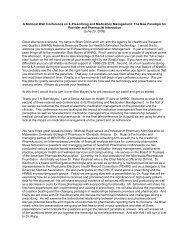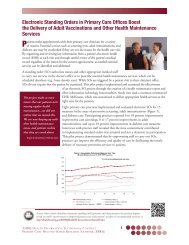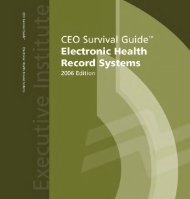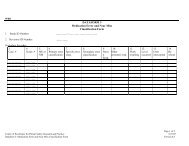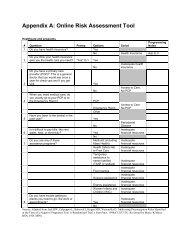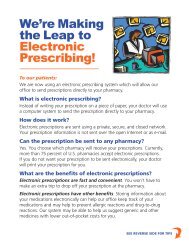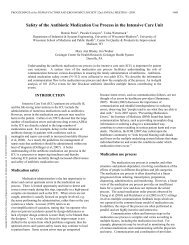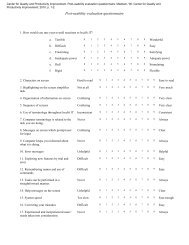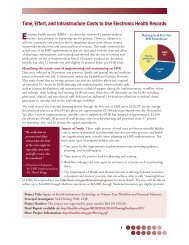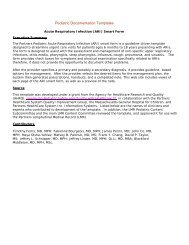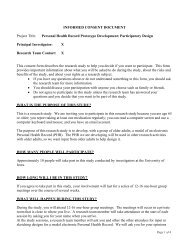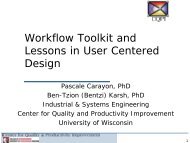Creating an Evidence Base for Vision Rehabilitation
Creating an Evidence Base for Vision Rehabilitation
Creating an Evidence Base for Vision Rehabilitation
You also want an ePaper? Increase the reach of your titles
YUMPU automatically turns print PDFs into web optimized ePapers that Google loves.
Abstract<br />
Purpose: “<strong>Creating</strong> <strong>an</strong> <strong>Evidence</strong> <strong>Base</strong> <strong>for</strong> <strong>Vision</strong> <strong>Rehabilitation</strong>," focused on the<br />
implementation of the Electronic <strong>Vision</strong> <strong>Rehabilitation</strong> Record (EVRR®) - a patient care system<br />
designed to allow <strong>for</strong> st<strong>an</strong>dardized patient assessment <strong>an</strong>d intervention of vision rehabilitation.<br />
The project objectives were to increase patients’ functional ability, to determine predictors of<br />
optimal post-intervention functional ability, <strong>an</strong>d to achieve optimal levels of perceived patient<br />
satisfaction.<br />
Scope: The project involved the installation <strong>an</strong>d implementation of EVRR® at Lighthouse<br />
International, The IRIS Network in Maine, <strong>an</strong>d the Central Association <strong>for</strong> the Blind <strong>an</strong>d<br />
Visually Impaired (CABVI) in Utica, New York.<br />
Methods: EVRR®’s methodology is consistent with the functional model of rehabilitation<br />
which involves the assessment of the patient's functional difficulties <strong>an</strong>d relating them to needed<br />
interventions. Following service delivery, patients are re-assessed to document ch<strong>an</strong>ges in<br />
functioning. EVRR® <strong>an</strong>d patient satisfaction surveys served as data sources.<br />
Results: All self-assessment <strong>an</strong>d provider intervention functional ability scores signific<strong>an</strong>tly<br />
improved following the receipt of service, with the exception of one at one agency. Receiving a<br />
orientation <strong>an</strong>d mobility (safe travel) intervention consistently emerged as a predictor of optimal<br />
post-service functioning. Patient satisfaction surveys demonstrated high levels of satisfaction<br />
with services received.<br />
Key Words: vision rehabilitation outcomes, low vision<br />
The authors of this report are responsible <strong>for</strong> its content. Statements in the report should not<br />
be construed as endorsement by the Agency <strong>for</strong> Healthcare Research <strong>an</strong>d Quality or the U.S.<br />
Department of Health <strong>an</strong>d Hum<strong>an</strong> Services of a particular drug, device, test, treatment, or<br />
other clinical service.<br />
2



